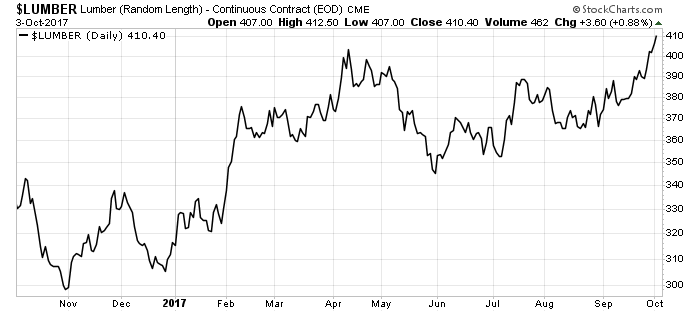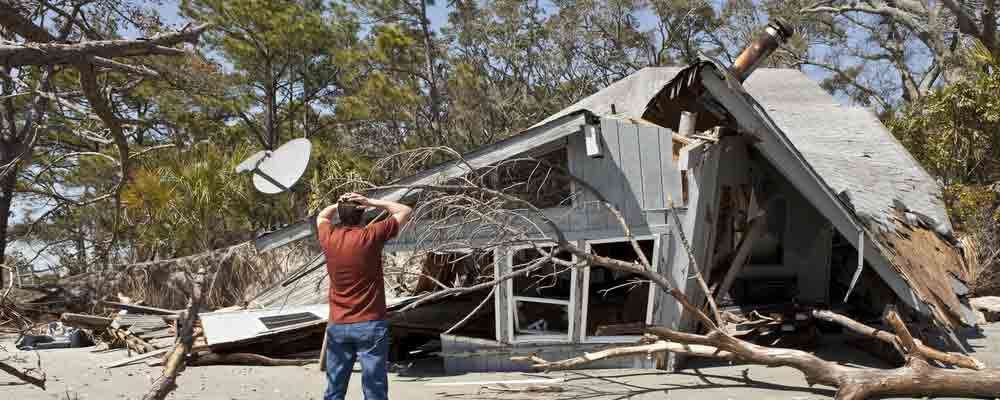The house roared and moaned around me. In the dim light, I could see the trees thrashing around me. We didn’t hear the trees fall as much as feel them as they thundered to the ground.
It was the longest five hours of my life to date. My normally calm dog panted at my feet.
From around 2 a.m. to 7 a.m. on Monday, September 11, I was on high alert. That’s when the largest and strongest rain bands arrived at my home from Hurricane Irma. My wife sat next to me while my two children slept (thankfully).
We had plans in place if the roof came off … or a tree came through a window … or any of a dozen other scenarios. But all we could do was wait as the storm roared around us.
We were fortunate. While our trees took a beating, our home remained intact. I spent the next couple of days running a chainsaw to clear off my property, then my neighbors’ and friends’ homes. We saw a lot of damage in North Florida — mostly from tornadoes.
While the tally is still rising, Hurricane Irma’s property damage bill will be north of $42.5 billion. It could be as high as $65 billion. It destroyed a quarter of the houses in the Florida Keys alone.
Hurricane Harvey, which hit the Houston area earlier this summer, did $23 billion in property damage. Over $4.1 billion of that was damage to residential homes.
As you can imagine, the mass destruction caused by these storms created a bull market in timber and building products.
Let me clarify that I never want to profit from the misfortune of others. I was among the folks who escaped Irma with minimal damage. However, I will still be among the folks buying building products — I have to replace several windows.
Normally, this would be a small boost for the folks who make wood products … however, there is a complication.
Demand for Wood Is Ripping
The U.S. just slapped a huge tax on Canadian lumber.
The U.S. claimed that the government of Canada gave its timber industry an unfair advantage. It hit Canadian lumber imports with a tough anti-dumping duty.
The 7.7% tax on Canadian building material went into effect back in June. The total tax on Canadian lumber today is between 17% and 31%.
This tussle isn’t new. The U.S. hit Canadian wood with tariffs in 1991 and 2001.
That’s because while the U.S. grows most of its trees on private land, Canadian mills buy their timber from government land. They pay less for the wood and will get about $654 million in government handouts.
The added tax is tough for Canadian lumber mills, because 75% of that material goes to the States. The problem is that in the wake of Hurricanes Harvey and Irma, demand for wood is ripping today.
You can see what I mean in the chart below:

As you can see, the price of lumber is up 10% since Harvey hit in August. That’s sending timber companies’ shares soaring:
| Company | Symbol | Performance Since Early August |
| Rayonier Inc. | RYN | 5% |
| Weyerhaeuser Co. | WY | 10% |
| iShares Global Timber & Forestry ETF | WOOD | 11% |
| West Frazier Timber Co. | Toronto: WFT | 18% |
| Potlatch Corp. | PCH | 19% |
Timber companies in the U.S. follow a real estate investment trust (REIT) business model. That means they manage several types of timberland properties. They own the land where they grow and harvest the trees to make lumber, building products and cellulose.
The easiest way to profit from this trend is to buy the iShares Global Timber & Forestry ETF (Nasdaq: WOOD). However, in my Real Wealth Strategist newsletter, I let readers in on this trend a couple months ago. The company we bought did well — up 15% on the trend. And we get paid to own the stock.
We’ve cashed one check already, and we just bought it in June!
Regardless of how you trade the lumber boom, you should buy shares in this sector today. Forecasters say another hurricane will be in the Gulf of Mexico this weekend. When it hits the U.S., it will only add fuel to this bull market.
Good investing,

Matt Badiali
Editor, Real Wealth Strategist




